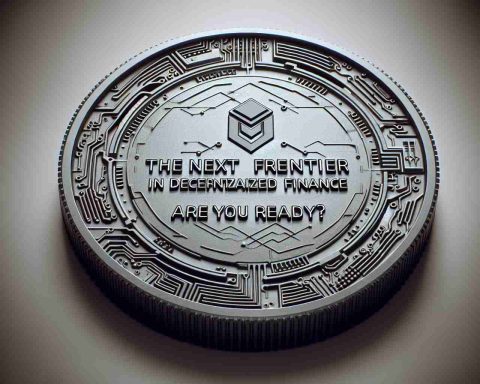- Ethereum transaction fees have dropped over 70%, rejuvenating network activity and enabling cheaper interactions.
- An increased gas limit allows more transactions per block, reducing congestion and inviting users to explore decentralized applications and smart contracts.
- Nearly a million ETH have moved from exchanges to private wallets within ten days, hinting at a potential supply squeeze.
- This reduced supply, combined with lower fees, positions Ethereum for possible price increases if demand intensifies.
- Ethereum is currently facing resistance around $2,800, with technical indicators suggesting caution despite inherent potential.
- The crypto community closely monitors Ethereum’s developments, anticipating a possible bullish trend.
Ethereum, once the unrivaled second-in-command in the crypto universe, is sending ripples through the digital asset seas, hinting at a potential resurgence. The whisper of change begins with drastically lower transaction fees, plummeting over 70%. This plunge breathes new energy into Ethereum’s ecosystem, as developers and users find themselves paying far less for interactions on the network.
Imagine a bustling marketplace, suddenly toll-free. This drop in fees stems from a hike in the network’s gas limit, essentially allowing more transactions per block and easing notorious congestion. Such transformations have historically sparked bursts in Ethereum activity, drawing in users eager to explore decentralized applications and smart contracts without incurring hefty fees.
But there’s more beneath the surface. Ethereum’s reserves on exchanges have shrunk dramatically. In a mere ten days, nearly a million ETH shifted away from these digital marts into private wallets, suggesting a looming supply squeeze. With less Ethereum available for sale, a price rally could ignite if demand kicks into high gear.
Yet, obstacles loom large. Ethereum, currently dancing around the $2,800 mark, battles formidable resistance. Technical metrics whisper caution, with indicators like the Relative Strength Index nearing oversold levels, yet lacking the spark of bullish fervor.
However, the tighter supply against a backdrop of reduced fees paints a picture of latent potential. Should demand awaken from its slumber, Ethereum may not just test but triumph over its hurdles, possibly setting the stage for a long-awaited bull run. For now, eyes remain peeled, as the crypto community watches this epic saga unfold, eager to see if Ethereum will reclaim its glittering mantle.
Could Ethereum Spark a New Bull Run? Here’s What to Know
How-To Steps & Life Hacks for Engaging with Ethereum
As Ethereum fees have dropped, newcomers and experienced crypto users might wonder how best to engage with the network. Here are some steps:
1. Setting Up a Wallet: To interact with Ethereum, set up a digital wallet like MetaMask or Trust Wallet to store and manage your assets.
2. Accessing DeFi Platforms: With lower transaction fees, explore decentralized finance (DeFi) platforms such as Uniswap or Aave for lending, borrowing, or trading assets.
3. Exploring NFTs: Utilize platforms like OpenSea to mint, buy, or sell non-fungible tokens without excessive gas fees.
4. Developing dApps: If you’re a developer, leverage Ethereum’s tools and smart contracts libraries like Truffle to build decentralized applications (dApps).
5. Engaging in Staking: Consider staking ETH on platforms like Lido to earn passive rewards while contributing to network security.
Real-World Use Cases
– Decentralized Finance (DeFi): Ethereum’s lowered fees make DeFi platforms more accessible, enabling broader participation.
– Supply Chain Management: Companies can deploy Ethereum-based smart contracts to improve transparency and efficiency in supply chains.
– Voting Systems: Ethereum can power secure and transparent voting systems for private organizations or public elections.
Market Forecasts & Industry Trends
Ethereum is predicted to continue its growth trajectory alongside the burgeoning DeFi and NFT sectors. According to CoinGecko, Ethereum’s market cap might expand as more users adopt blockchain solutions in their businesses.
Reviews & Comparisons
Ethereum faces competition from other blockchain platforms like Solana and Cardano. Here’s how they compare:
– Transaction Speed: Solana boasts faster transactions than Ethereum, but Ethereum’s recent scalability improvements are bridging this gap.
– Community and Developer Support: Ethereum has a larger community and more robust developer ecosystem compared to rivals.
Controversies & Limitations
– Environmental Impact: Despite Ethereum 2.0’s shift to proof-of-stake, concerns about energy consumption remain a topic of discussion.
– Scalability Challenges: Ethereum still grapples with scalability issues although ongoing upgrades aim to address them.
Features, Specs & Pricing
Ethereum’s recent network updates have increased its gas limit, reducing congestion. The price of Ethereum is volatile and can fluctuate rapidly; as of now, it’s hovering around $2,800.
Security & Sustainability
Ethereum’s transition to proof-of-stake is expected to enhance security by making it economically infeasible for attackers to compromise the network. This shift also significantly reduces energy consumption.
Insights & Predictions
Experts predict if Ethereum overcomes technical resistance and demand increases, it could trigger a significant price rally that pushes its value beyond current levels.
Tutorials & Compatibility
– Developers: Use tools such as Remix or Hardhat to develop smart contracts compatible across various Ethereum Virtual Machine (EVM) compatible chains.
– Users: Platforms like Coinbase and Kraken offer tutorials for buying and trading Ethereum.
Pros & Cons Overview
– Pros: Lower fees, robust dApp ecosystem, improved scalability with Ethereum 2.0.
– Cons: Still challenged by competing blockchains, energy use, fluctuating fees during high demand.
Actionable Recommendations & Quick Tips
– Diversify Investments: Consider also exploring Ethereum competitors like Solana.
– Stay Informed: Use platforms like CoinDesk for the latest crypto news and analysis.
As the Ethereum network continues to evolve, staying abreast of market trends and strategic planning will position you to benefit from potential opportunities in the blockchain space.
















